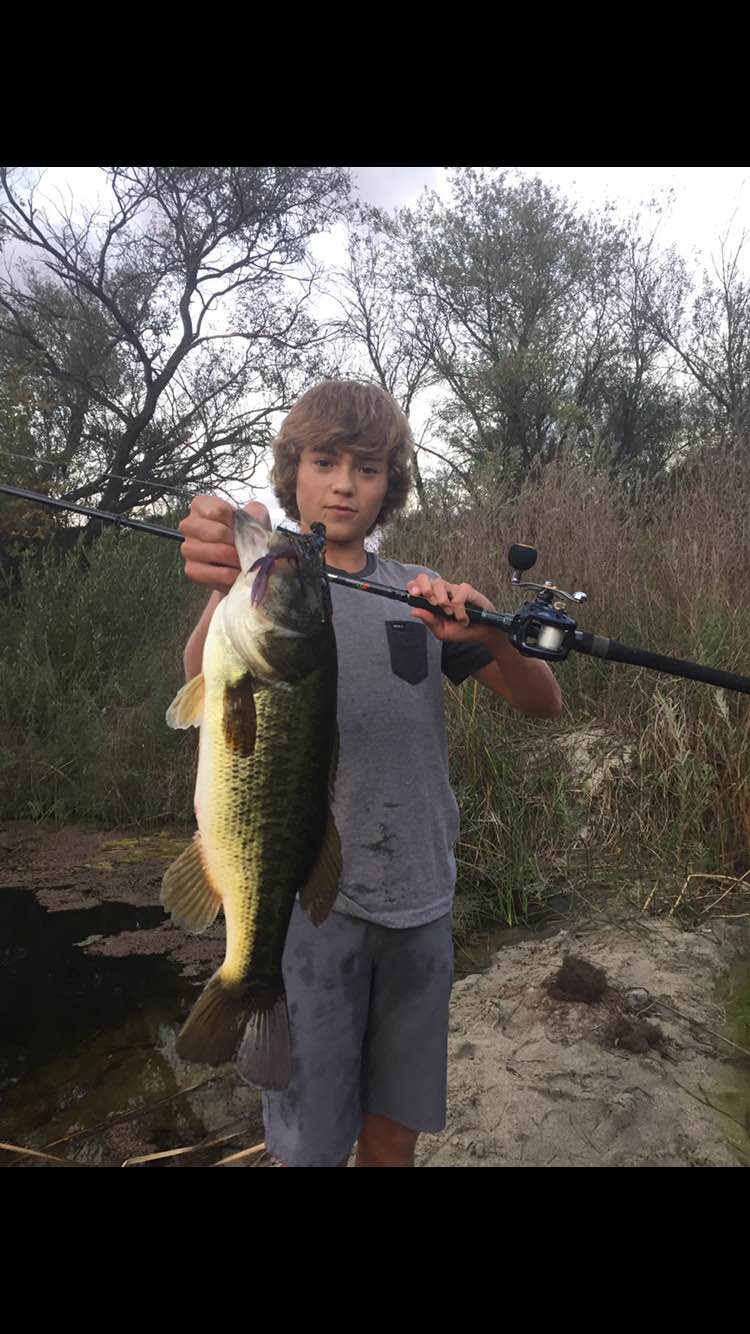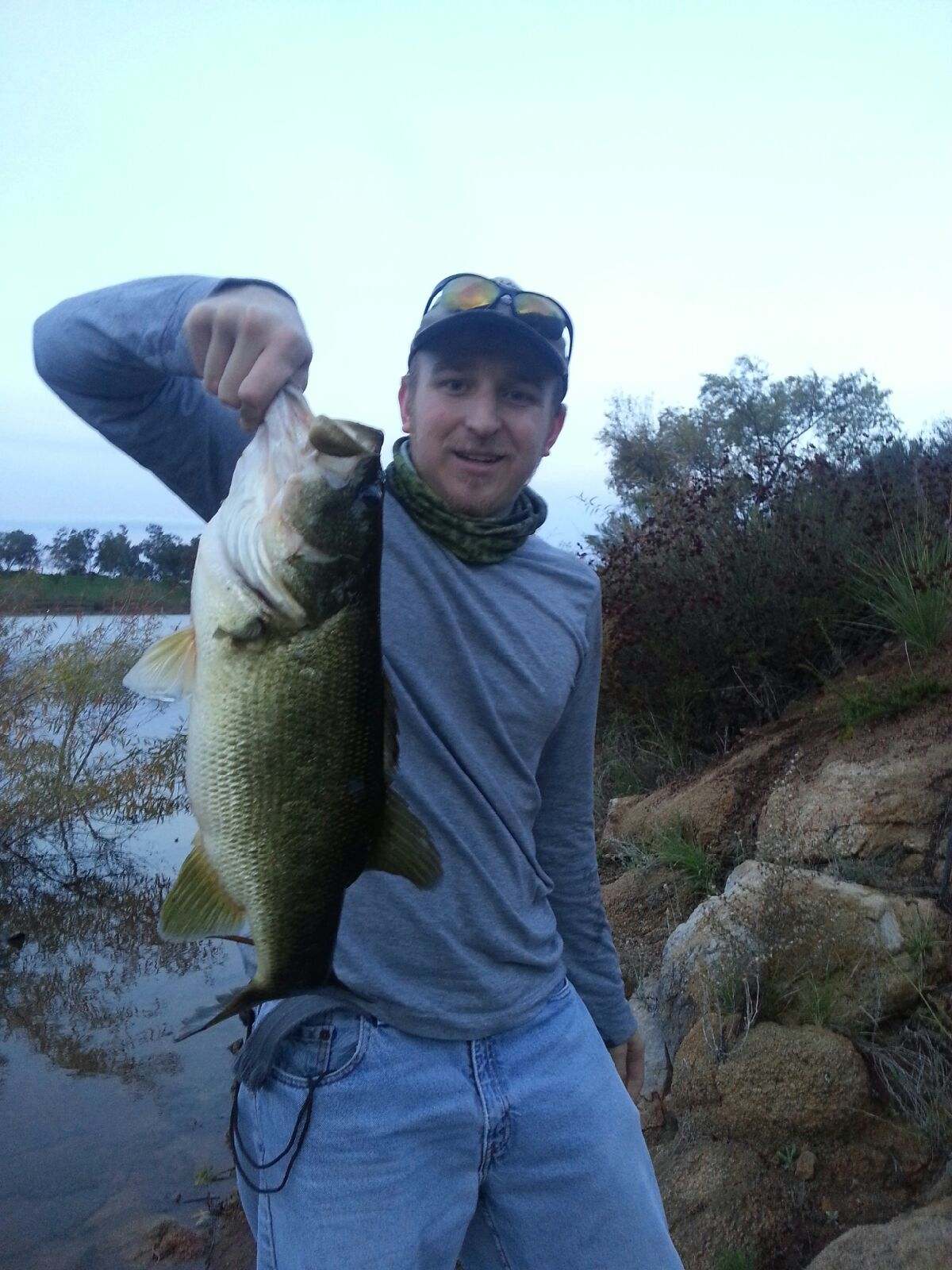All Ashore For SoCal Largemouth
The following appears in the February issue of California Sportsman:
By Mike Stevens
If there are any positives to take out of the drought and its accompanying insanely low water levels in, the addition of new stretches of walkable shoreline is a huge one for anglers.
Not only does access to, in some cases, miles of new shoreline give bank pounders more room to operate, but it also grants them access to areas previously unreachable. It can also bring them within casting range of offshore structure, some of which may now be breaching the surface.
I reached out to a handful of shore bassers to pick their brains on the matter. They include full-time bank guys, part-time boaters and even a full-time boater who still taps into his shore-fishing roots when casting big swimbaits from the deck of his Skeeter bass boat.
THE GRINDER
San Marcos angler Chip Gilbert is a SoCal guide with over 50 double-digit bass on his resume and who specializes in grinding big swimbaits for monsters. In his mind, trout season is one of the best times a bank robber can have a good shot at sticking a wallhanger.
“Shore fishing can be very productive with a swimbait,” says Gilbert. “Tightly paralleling the shoreline with a wake-style bait can produce big bites. Also, fishing the rubber baits slow and uphill is a lot easier from the bank, and being able to creep your bait along the bank and keep it 3 to 8 feet deep is a great way to get a big bite. Trout run the banks after being stocked, so the bass will follow.”
Gilbert’s name might ring a bell. He received national attention when he put together a 51-plus-pound limit at Lake Perris, all on Huddleston trout-imitating swimbaits.
ACTIVITY SCHEDULE
Michael White of Riverside is a bass angler who has sticking fish from the shores of Lake Perris dialed in, but says analyzing activity and cover is something that can be applied anywhere.
“What I look for when I arrive to the lake is activity,” says White. “Baitfish busting, fish busting, birds swarming, etc. I will usually pick a spot that looks best and dissect it, and if I find any type of cover – for example stumps, logs and grass – I will fish it. I’ll fish top, middle and bottom for about 20 minutes, and if I don’t get bit, I will move on.”
“I’ll start on top with a frog or a Prankster. If that doesn’t work, I like throwing an underspin in and around the grass, or I will split-shot a creature bait along the bottom. One benefit to getting out and hitting the shore is you slow down and catch some fish that you wouldn’t have caught cruising by on a boat. I literally will sit out there and watch for boils, take note of the time, come back the next day and it’s on!”
STILL ENOUGH WATER
John Petroski of C3 Baits is, along with Chip Gilbert, another boater who keeps close-to-shore tactics in his arsenal at all times, and much of what he does from a boat can be executed just as well from the bank, if not better.
“With water levels being at historic lows due to the drought, it doesn’t always have to be a bad thing,” Petroski says. “Low water means new and never-before-seen shorelines, which is a positive spin on a dire situation.”
“Shore anglers now have access to miles of shoreline like never before, which in most cases lets them cast to areas unobtainable before. Normally, in my boat I will take to the shore to check things out. I’ll start on newly exposed points and cast where I think the point continues, usually with a blade bait or spoon just to ‘spec’ the area.”
“Once I get the lay of the land and determine its fishability, I begin to go through my baits of choice. I normally start with a jerkbait and fan-cast the area now that I am familiar with the depths and angles. I’ll do that for about 20 minutes and switch to a spoon, like a ½-ounce Kastmaster. If I need to change baits again, I will switch to a Carolina-rigged plastic like a C3 Baits Ice Pick, Spear or Teaser, which are all quality choices for a slow retrieve.”
“If I need to, I will relocate and again look for another newly resurfaced point. Some anglers don’t give a spot the proper time, and I’ve come to recently vacated spots and done well just being persistent.”
Petroski’s home waters are Castaic and Pyramid Lakes near Santa Clarita, but again, his approach can be applied to any body of water while targeting bass from the bank, especially if it’s a bank that is only there in years with low water.

POWAY POWER
San Diego angler Chris Norby is a pro staffer for the Drop-hook Fishing App, and his home watershed is Lake Poway, which is your classic tiny, ultra clear, highly pressured spot. That being said, it has a long history of kicking out world-class largemouth, including an 18-pound, 1-ounce lunker caught by Mike Long in 2002, which still stands as the lake record.
Besides the trout-fed monsters, Lake Poway can also produce good numbers of bass for even casual shore pounders if they know how to attack it.
“I’m honed in pretty well on how to get into bass from shore on a drop-shot rig,” says Norby. “Here’s what I’m looking for: In the spring, I’m targeting areas with shallow, flattening areas from shore. Look behind you; if the terrain flattens out on the shore, it should continue into the water. Also look at the coloration of the water, as dark areas are usually deeper.”
“During this season, bass on beds are likely to attack a worm floated over the bed. During this time of year, I like natural colors like brown, dark blues, etc., as well as some bright whites or pink. In the summer and fall, lots of that year’s spawned fish will be hanging out in the shallow water. These fish are easy to target and sight fish. I like a wacky-rigged worm, pumpkin green color. For the larger fish, deep-water dropoffs are the key to target from shore. I still prefer those worms, same colors.”
“Here are a few useful bits I’ve learned: tie the drop shot tag line long and decrease length as needed so you only have to tie once. I keep my leaders fairly long when fishing from shore, as it’s often necessary to keep the bait out of the weeds from the angle of a shore rather than boat. Also, keep it slow – a few twitches and then wait. This is a great technique for kids to learn if you’re taking them out with you. You can’t really do it wrong.”
PLASTICS MAN
Eric McIntire of FishHead Custom Lures also hits Poway and has a double-digit bass from there to his credit.
“In winter, I fish plastics or jigs off rocky points or anywhere that drops off quick,” McIntire says. “I might also slow roll a Hudd or slow drag 8-inch Texas-rigged plastics.”
McIntire was recently fishing at Poway and said, “I just saw a 4-pound bass sitting on the bottom with a tail sticking out of its mouth.”






